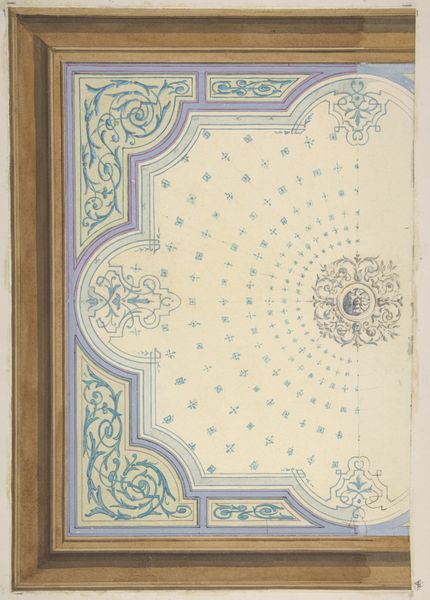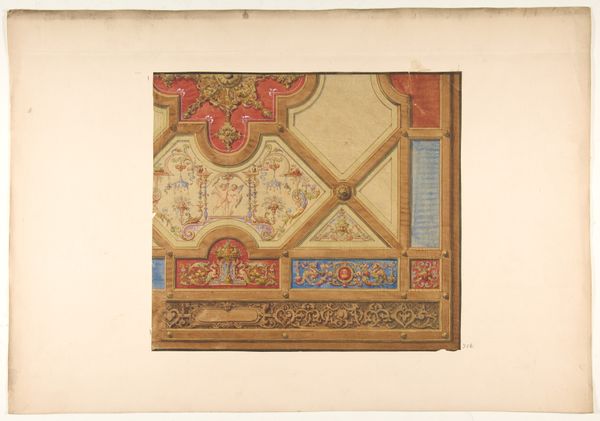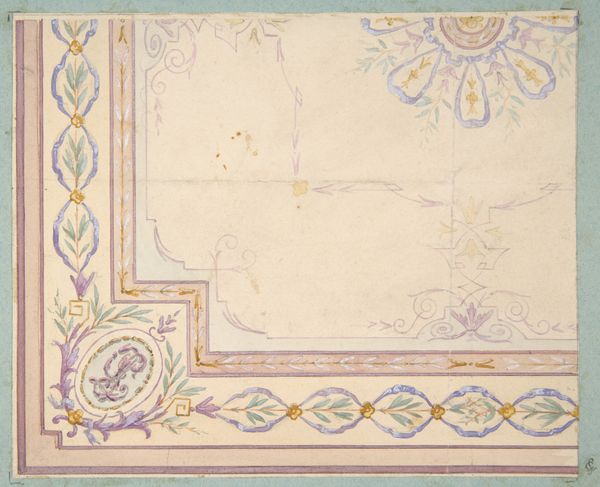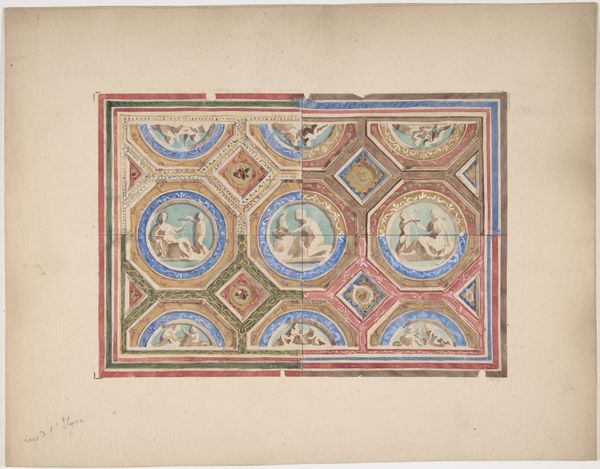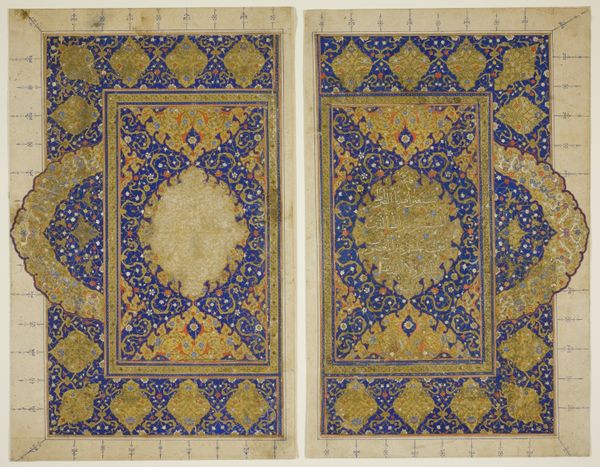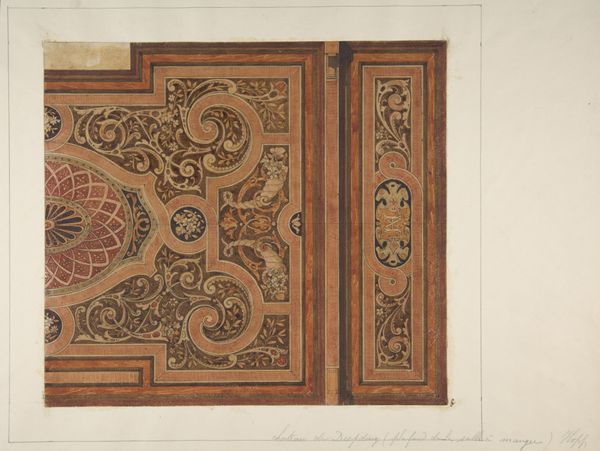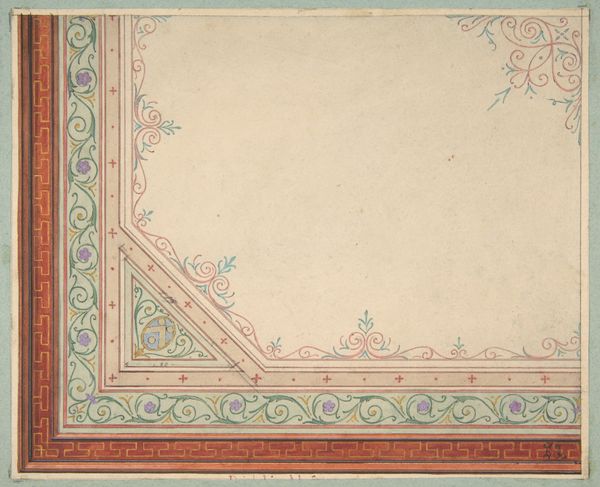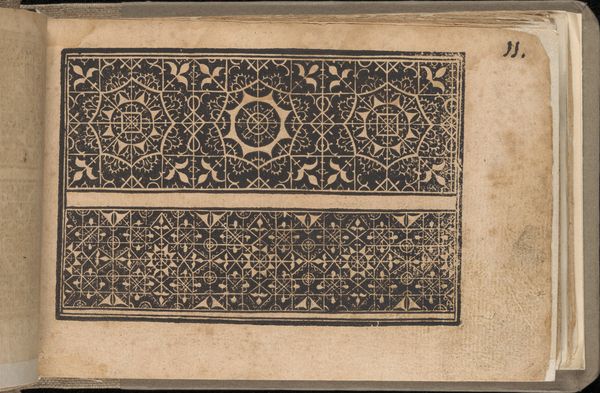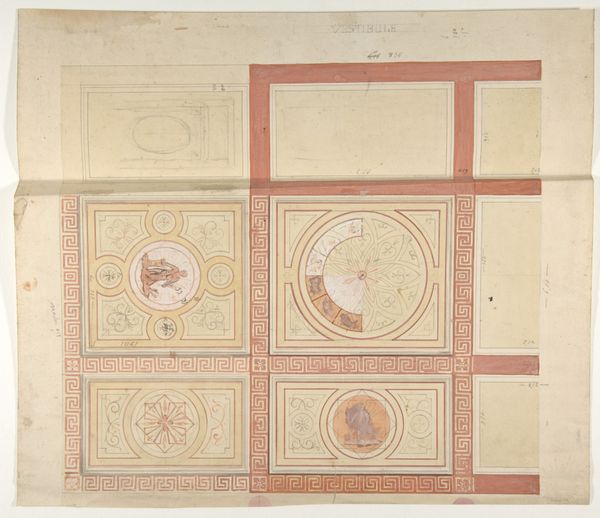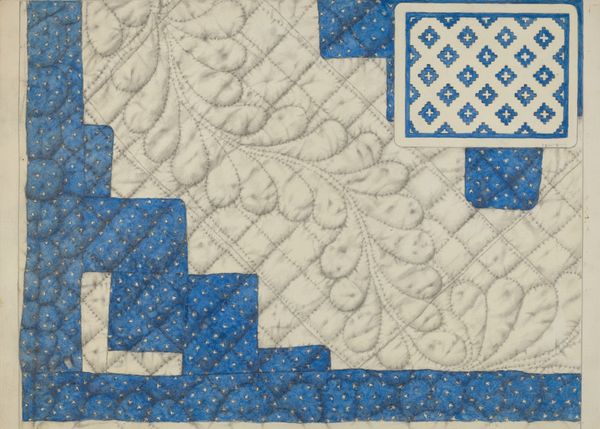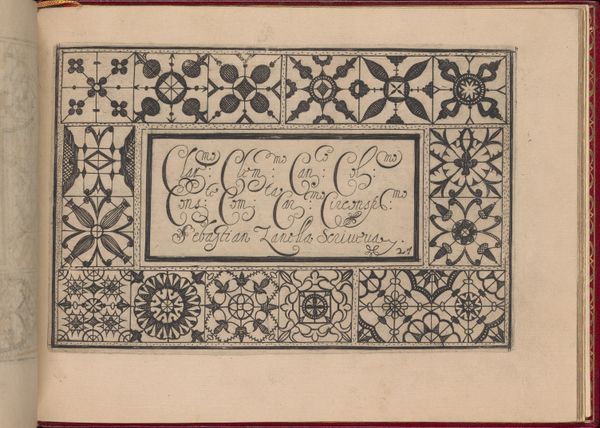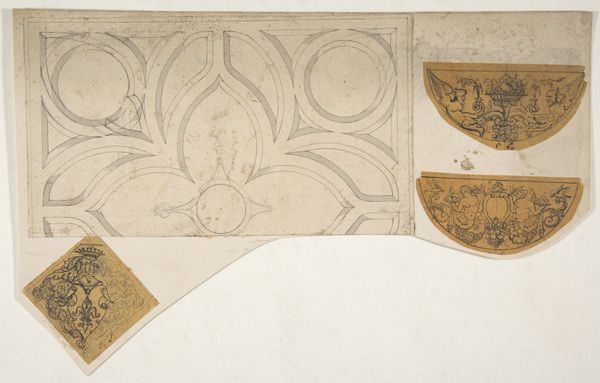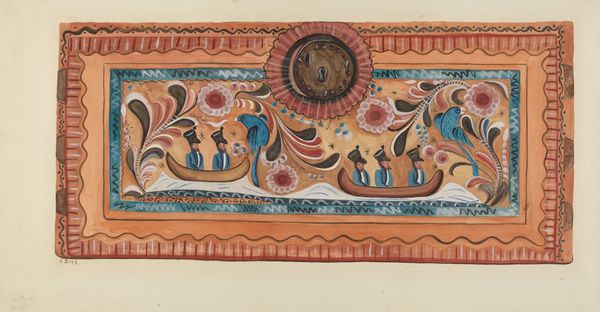
Design for the painted decoration of a coffered ceiling 1850 - 1900
0:00
0:00
drawing, print, paper, watercolor
#
drawing
# print
#
paper
#
watercolor
#
geometric
#
watercolor
Dimensions: sheet: 7 5/16 x 9 7/8 in. (18.5 x 25.1 cm)
Copyright: Public Domain
Editor: This watercolor, ink, and graphite drawing on paper is entitled “Design for the Painted Decoration of a Coffered Ceiling,” likely created between 1850 and 1900. It's currently held at the Metropolitan Museum of Art. I’m really drawn to the geometric patterns and the way the different shapes interact. What formal elements stand out to you? Curator: The relationship between line, shape and color is critical here. Note the artist's manipulation of geometric forms. How the interplay of rectilinear and curvilinear elements contribute to visual tension. Consider the contrasting textures achieved through the use of watercolor washes versus the sharp delineation of the graphite underdrawing. Editor: I see how the bold colors of the patterns on the right draw your eyes in compared to the pencil line patterns on the left, even though they all have a similar amount of detail. Why do you think the artist left sections only partially finished? Curator: The incomplete nature of certain sections offers us an intriguing glimpse into the artist’s process, it allows the viewer to decode the steps in the design. Do you notice the geometric construction versus the calligraphic placement? We can discern the artist's structural methodology. This emphasizes the meticulous planning that underpins even the most ornate decoration. Editor: So, by observing the work as it is, we get an interesting peek behind the curtains in how this sort of design work would actually happen. I guess seeing what's "missing" is just as important as what is present in understanding it. Curator: Precisely! Through analyzing these arrangements of visual elements, we gain a richer understanding. It encourages us to engage critically with the piece and recognize how thoughtful arrangement affects our reading.
Comments
No comments
Be the first to comment and join the conversation on the ultimate creative platform.
